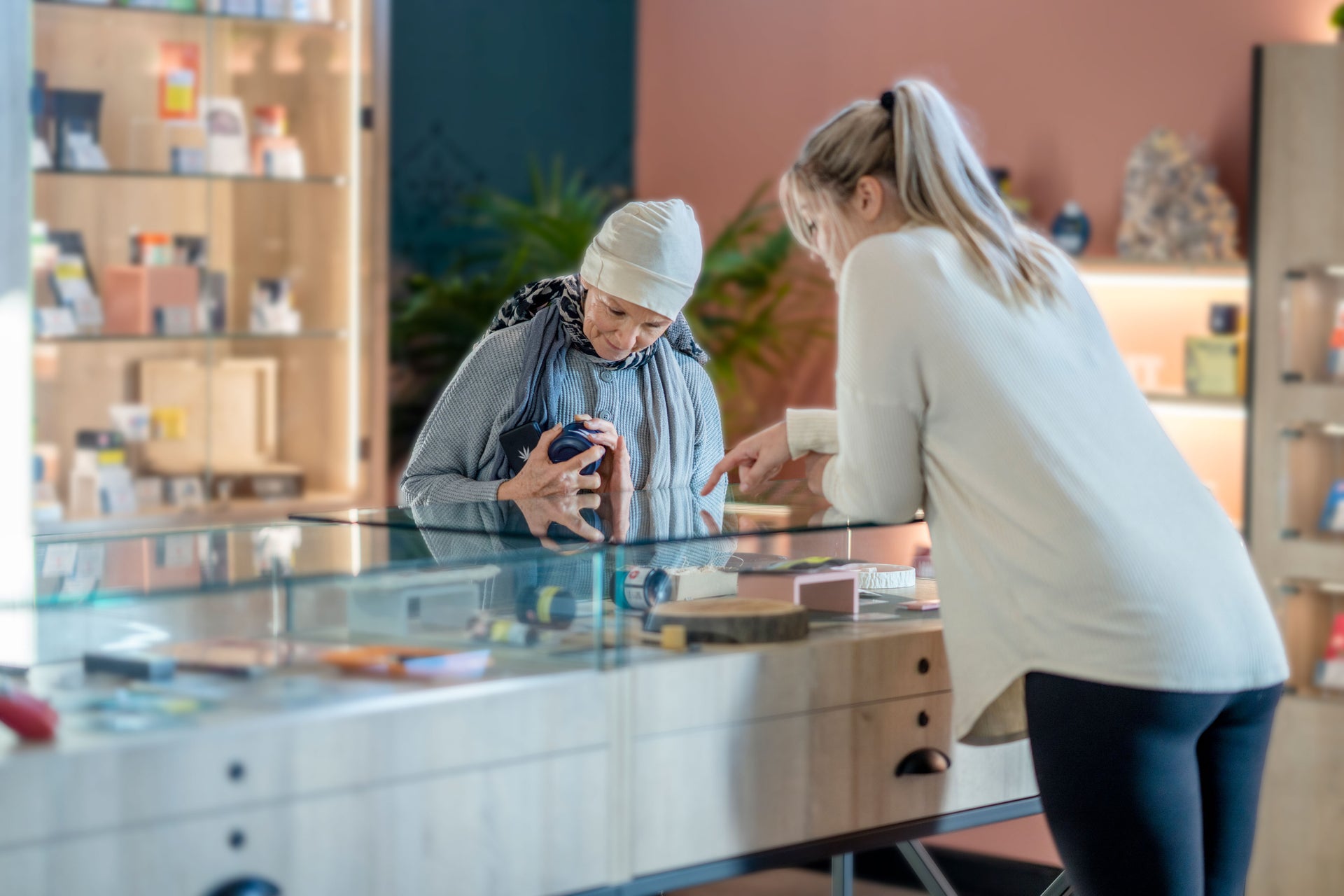Buying Certified, Safe & Reliable CBD
As CBD gained popularity in the past few years, a flood of CBD products—of widely varying qualities—has appeared on the market. So when you pick a box off a shelf, or add a bottle to your online cart, how do you know the product you’re buying is authentic, safe and reliable? In fact, how do you know it’s even real CBD?
WHAT DO WE MEAN BY “REAL CBD” AND “FAKE CBD?”
There are many credible CBD products (let’s call them “real CBD products”) that you can trust to lend a sense of calm, and even help with wellness concerns such as muscle relief, restless sleep, and everyday stress. These products are up-front in their marketing, traceable to their sources, properly labelled, and backed by an objective certificate of analysis (COA).
However, there are other products (let’s call them “fake CBD”) that are not reliably sourced or responsibly manufactured, don’t contain the active ingredients found in real CBD products, and can’t be trusted to provide consistent results (or any results, really). How do you tell the difference? Unsurprisingly, it starts with the label.
TAKE A CLOSE LOOK AT THE LABEL
It’s important to note that, as of this writing, the Food and Drug Administration (FDA) has not formally approved any non-prescription CBD products. As a result, there are currently no standards for the labelling of these products, so it’s up to you to determine the quality of your CBD purchases. A close look at the label will help. Check for:
- The presence of CBD
This may seem obvious, but real CBD products contain CBD, and their labels will clearly indicate the amount of CBD they offer per serving (for example, 10 mg, 50 mg, 100 mg) and the total amount of CBD per container. (This will help you find your ideal intake of CBD.)
Fake CBD products are often made from hemp (the plant from which CBD is derived), but will contain little to no actual CBD or benefits. They may also be marketed in a way that’s misleading, confusing, or tries to equate hemp with CBD. To learn more about the differences between CBD oil and hemp oil, read our blog on the subject.
- The manufacturer’s website
You should be able to easily the site on the label. There, you can check for deeper information on the product, read user reviews and testimonials, and get a feel for the manufacturer, their commitment to quality and transparency, and their general level of trustworthiness.
- A link to a certificate of analysis (COA)
All reputable CBD products will have a COA that has been issued by a neutral third party. Check the product label for a QR code links to the COA or look for it on the manufacturer’s website. If you can’t find a COA in either place, consider it a warning sign.
WHAT IS A CERTIFICATE OF ANALYSIS (COA)?
A COA is an unbiased and verifiable report issued by a third-party laboratory. It contains a lot of specific information, but ultimately, it answers two simple questions:
- What’s in the product?
The COA provides a detailed analytical summary of what’s in the product, and in what amounts. This includes naturally occurring cannabinoids (most commonly CBD and THC), as well as unwanted compounds such as pesticides, solvents, and heavy metals. Make sure that the CBD and THC content listed in the COA matches that on the product label; be wary of any inconsistencies between the COA and the label.
- Is the product legally compliant?
Together with the quantity of each compound in the product, the COA will show the compound’s legal limit, making for a simple side-by-side comparison. Keep in mind that the THC content of legal CBD products cannot exceed the federal limit of 0.3%.
- Additional information on the COA
The COA will also include the name and address of the laboratory that performed the analysis, along with the product’s name, its lot (or batch) number, and its expiration date. In addition, some COAs provide information regarding the product’s appearance and texture, so you can confirm that it looks as it should.
For more information on COAs and why they’re important, read our blog on the subject.
HOW TO RESEARCH A CBD BRAND
CBD comes in many forms these days. You’ll find CBD vapes, oil, gummies and other edibles, drinks, tinctures, topical creams and lotions, capsules and softgels—even CBD for pets. It’s easy to get overwhelmed by all the options.
- Avoid purchasing from unknown brands or websites (especially if they don’t provide COAs)
- Look for brands that are transparent about their CBD extraction process and other manufacturing practices, any additional ingredients in their products (for example, carrier oils), and even such things as return policies
- Check product reviews and testimonials (although these may be difficult to verify)
You may also want to look for products that are vegan, cruelty-free, or non-GMO.
Finally, you can always reach out to a company’s customer support team if you have additional questions; any reputable brand should be happy to provide the information you need to make your decision.
